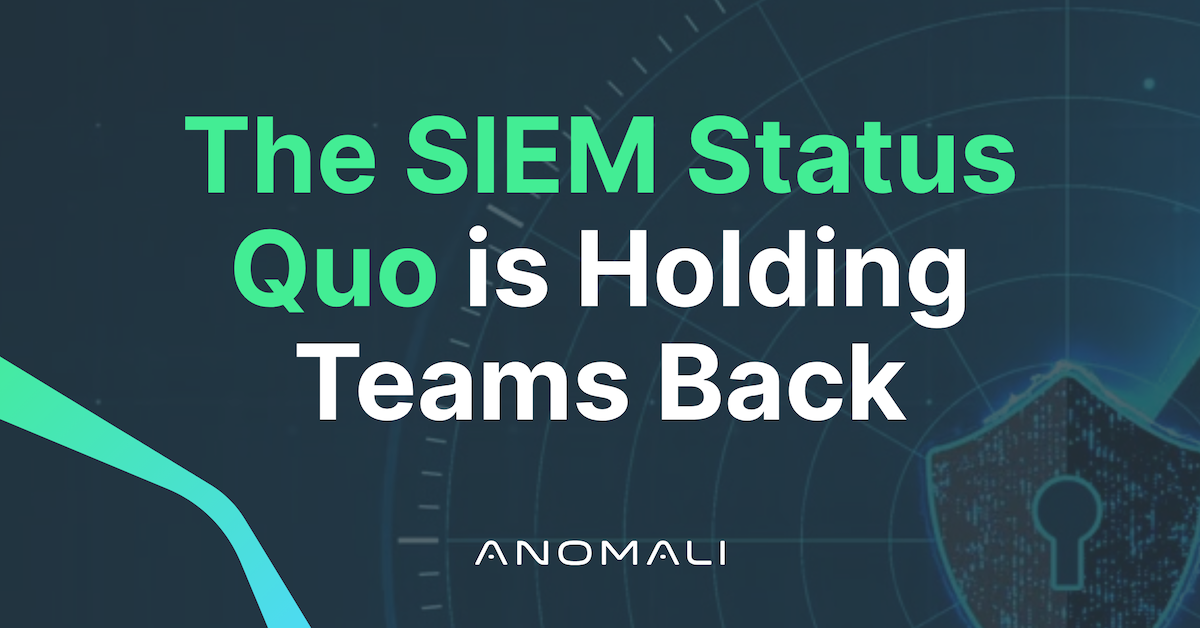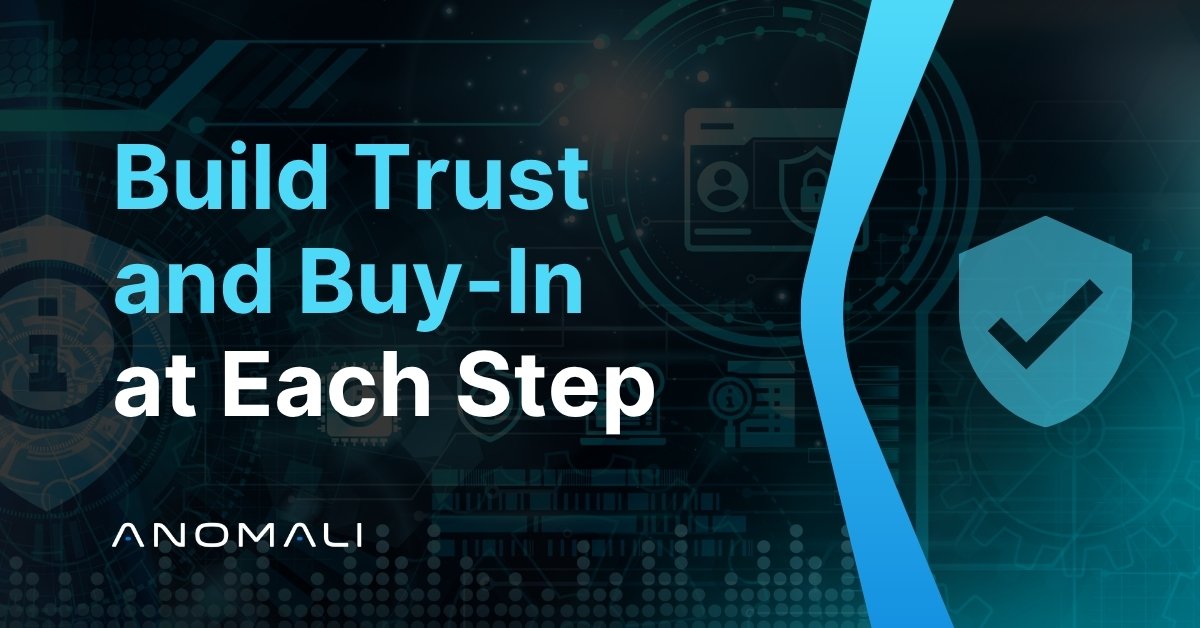What's Next for SIEM? Insights From Detect LIVE
At this year’s Anomali Detect LIVE user conference, we kicked things off with a big question: What is the future of SIEM?


In a candid conversation with Anomali President Hugh Njemanze, Senior Advisor Christian Karam, and cybersecurity analyst Francis Odum, one thing became clear — traditional SIEM is no longer fit for the threats we face today.
Legacy tools built for yesterday’s problems are dragging security teams down with slow pipelines, rigid data models, and runaway costs. As Karam put it, “The choices we made in the past have always compromised on performance, scale, and the type of data you want to bring in.”
This lack of flexibility around the data, he explains, hinders the ability to unlock newer modern use cases that cross between security, IT operations, insider threats, physical security, and the larger security ecosystem. That’s no longer acceptable.
The SIEM Status Quo Is Holding Teams Back
For many security teams, SIEM is a necessary evil — something they have to use, not something they want to. Legacy SIEMs were designed for a different era — one with fewer data sources, simpler infrastructures, and slower-moving adversaries. Today, that model is cracking under pressure.
Modern attackers move fast, pivot laterally, and exploit the blind spots across cloud, on-prem, and hybrid environments. But traditional SIEMs weren’t designed for the volume, speed, or complexity of today’s threats. And simply shifting them to the cloud — without rethinking the architecture — doesn’t solve the problem.
During the Detect Live discussion, Francis Odum summed it up this way: “You’re throwing more and more logs at it, hoping something sticks. It’s an economic and security dead end.”
That “dead end” isn’t just about capability — it’s also about cost. The pricing models that underpin most legacy SIEMs punish scale. Teams are forced to filter out valuable telemetry just to avoid performance issues or budget overruns. Cold storage tiers and delayed data retrieval become operational bottlenecks.
Meanwhile, analysts are bogged down with manual correlation and tuning instead of acting on insights. “The biggest problem I hear today is cost, cost, cost,” said Odum. It’s a system where growing data volumes don’t lead to better visibility — just higher bills and bigger gaps.
What Forward-Looking Teams Expect
The path forward starts with understanding that real transformation isn’t about retrofitting the past. It's about building for how threats behave today. Tech features are the not answer. This is about business outcomes.
“Our view is that the SIEM of the future cares less about boundaries and must solve scalability once and for all — being able to ingest everything that holds clues and analyze all of it simultaneously, not just over 24 hours or 30 days, but over whatever period is pertinent to what you’re trying to unearth.” - Hugh Njemanze
That means:
- Serverless architecture that scales without bloated infrastructure
- Always-hot access to years of raw telemetry — no tiering, no retrieval delays
- Integrated intelligence so detection isn’t blind and prioritization isn’t manual
- Real-time correlation and response that adapts with machine learning
- Unified analyst workflows that eliminate context-switching and alert fatigue
“This is where our work at Anomali has been focused,” said Hugh Njemanze, President of Anomali. "We give security teams the ability to ingest everything and lose nothing — not time, not fidelity, and certainly not context.”
For example, instead of writing complex rules to detect a credential-stuffing attack, modern systems like Anomali Security and IT Operations Platform apply behavior models and intelligence overlays to surface that activity in real time. Analysts triage incidents with full context — not after exporting logs to another tool for analysis.
This approach empowers threat hunters and reduces fatigue. Context-rich alerts and unified telemetry speed time-to-insight, enabling teams to take decisive action — without piecing together fragmented evidence from siloed tools.
"I think in some ways, the choices around deploying SIEM technologies in the past have always been based on a compromise. You're compromising on performance, compromising on scale, on speed, on the type of data you want to bring in. And the flexibility around the data that can come in really unlocks newer modern use cases that are somewhat crossing between security, IT operations, insider threat, physical security, and the larger security ecosystem." - Christian Karam
The Role of AI in Modern Security Operations
Christian Karam brought the conversation into focus with a key point: AI isn’t optional anymore — it’s foundational. Legacy, rule-based detection systems can’t keep pace with modern adversaries. AI doesn’t just speed up workflows; it gives analysts a strategic advantage.
“AI sitting next to a well-trained SOC analyst is like having a great business generalist helping you understand what’s happening on the business side,” Karam said. It’s about enhancing judgment, surfacing context, and freeing analysts to focus where human insight is needed most.
Anomali’s Approach: Built for Now, Not Yesterday
Rather than retrofitting old models, Anomali took a fresh approach — designing a platform that fuses threat intelligence with real-time visibility from the ground up.
That means:
- Ingest everything without filtering out value to control cost
- Use intelligence natively, not as a bolt-on afterthought
- Correlate in real time across environments, behaviors, and known threats
- Predictable cost with no penalties for scaling up your data
At Detect Live, the takeaway was clear: it’s time to stop pouring more data into broken systems. The future of SIEM isn’t just about managing logs — it’s about driving insight, accelerating response, and giving defenders the upper hand.
Ready to Rethink Your SIEM?
The message from Detect Live was unmistakable: legacy SIEM is dead weight. Forward-thinking teams are moving on — toward platforms built for speed, scale, and real security outcomes.
- Watch this session from Detect Live
- Schedule a demo to see how the Anomali Platform delivers the future of SIEM — today.
No more compromises. No more workarounds. It’s time to evolve.
Discover More About Anomali
Get the latest news about cybersecurity, threat intelligence, and Anomali's Security and IT Operations platform.
Propel your mission with amplified visibility, analytics, and AI.
Learn how Anomali can help you cost-effectively improve your security posture.




